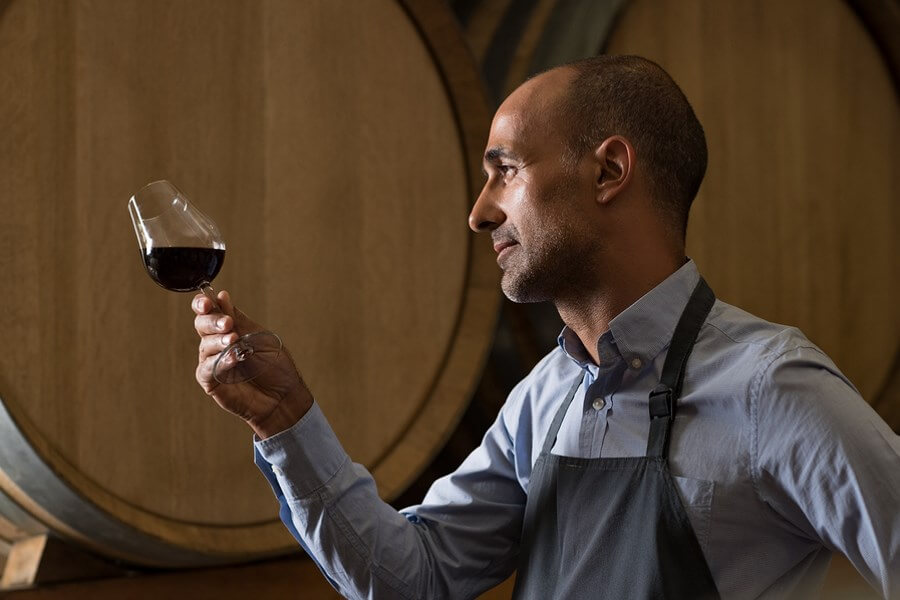These wine estates continue to make excellent wines as they did centuries ago. SecondBottle presents the best winemakers with amazing history, still producing award winning wines.

Share this article
The Best Winemakers:
Schloss Johannisberg, Germany:
It is Germany’s oldest winery, with a history of growing grapes dating back to 817AD. The climatic conditions and soil are perfect for growing Riesling grapes, the only grape grown on this estate since 1720.
In 1775, the winery cultivated Spätlese grapes and produced a delicious sweet Riesling, which graced royal homes. In 1971, under German law, the winery gained official appellation (Schloss Johannisberger). Since then, it does not need the village name on its labels.
By blending traditional and modern winemaking techniques, the winery produces one of the best Rieslings in the world. It is a unique wine that is pleasant to drink, with low alcohol content, delicate flavor, and sophisticated aroma.
Wine-searcher reports indicate that wine from the estate has won various awards at the Decanter World Wine Awards, International Wine & Spirit Competition, Japan Wine Challenge, and The TEXSOM International Wine Awards.
At the heart of the Rheingau, the estate has incredible views of the vineyard and the Rhine. To visit this fantastic winery, contact the staff and organize a wine tasting visit. The estate is open Monday–Friday (10:00a.m–1:00p.m and 2:00p.m–6:00p.m) and Saturday and Sunday (11:00a.m–5:00p.m). An amazing winery with great history, run by some of the best winemakers on the planet.
Wine-searcher reports indicate that wine from the estate has won various awards at the Decanter World Wine Awards, International Wine & Spirit Competition, Japan Wine Challenge, and The TEXSOM International Wine Awards.
Barone Ricasoli, Tuscany, Italy:
This magnificent winery is the largest and oldest in Italy. Records show that wine production in this estate dates back to 1141. Baron Bettino Ricasoli created the formula for Chianti wine (Chianti Classico) in 1872.
The winery is in Chianti Classico, the heartland of the Chianti wine region and the home of the Sangiovese grape. A grape prized for its high acid, firm tannins and balanced nature. The Blended Ricasoli wine must have 80% Sangiovese grape and 20% international or other local grape. These grapes include Carbernet Sauvignon, Chardonnay, Canaiolo, and Merlot. The climate and terroir of Barone Ricasoli is ideal for growing these grape varieties.
Francesco Ricasoli, the great-grandson of Bettino once said, “Our current research has almost a thousand years of history.” The estate conducts plenty of research to improve wine production and sustain the vineyards. This has seen wine from Barone Ricasoli win many awards in the Los Angeles International Wine Competition, Decanter World Wine Awards, 2010, 2013 and 2014.
The cellars at the foot of the Castle are the heart of Ricasoli. They showcase a mix of traditional and modern winemaking techniques. The cellars are contemporary and still have the 19th–century aesthetics and functions. You can visit the cellars, castle, and vineyard by booking any of the three tours offered at the estate. The tours include Castle Grounds Tour, Vineyard Tour, and Classic Tour. To book one of the tours, contact the estate.
Some of the greatest wineries in the world are owned by women!
Codorníu, Spain:
Documents from the year 1551 mention Jaume Codorníu’s winemaking activities and his vineyards. In the year 1872, Josep Raventós produced the first bottles of Spanish sparkling wine (cava), using a traditional method. Construction of the estate’s first cellars was completed in 1892. The old cellars were later replaced in 1915 when construction of new cellars was complete. Then in 1976, the new cellars became National Historic Monuments.
Codorniu was the first winery to create a cava using the famous Xarel·lo, Macabeo, and Pallerada grapes. It owns the oldest Pinot Noir and Chardonnay vineyards, used to produce cava. New cava came to the market during the 20th and 21st century, including;
- 1984 – the first cava to contain a Chardonnay,
- 2002 – the first rosé cava made from 100% red Pinot Noir,
- 2010 – the first white cava made from the Pinot Noir red variety,
- 2014 – a new cava that gets inspiration from the traditional winemaking method.
The estate works with the best tasters and oenologists to blend different wines and get the best combination (local and international grapes) for each cava. To ensure production of the best wine, it uses the latest technology to check the vineyards. And no chemical insecticides are used on the vines. Various vintages from Codorníu have received excellent points in the decanter awards over the years. Truly one of the best winemakers on the planet.
A tour of Codorníu is fantastic. Some people describe it as “The winery tour you do not want to miss.”.
Despite being in operation for over a thousand years, these wineries continue to produce award-winning wines on a yearly basis. They prove yet again that old is gold, and that when traditional and modern winemaking techniques are combined, quality is improved.